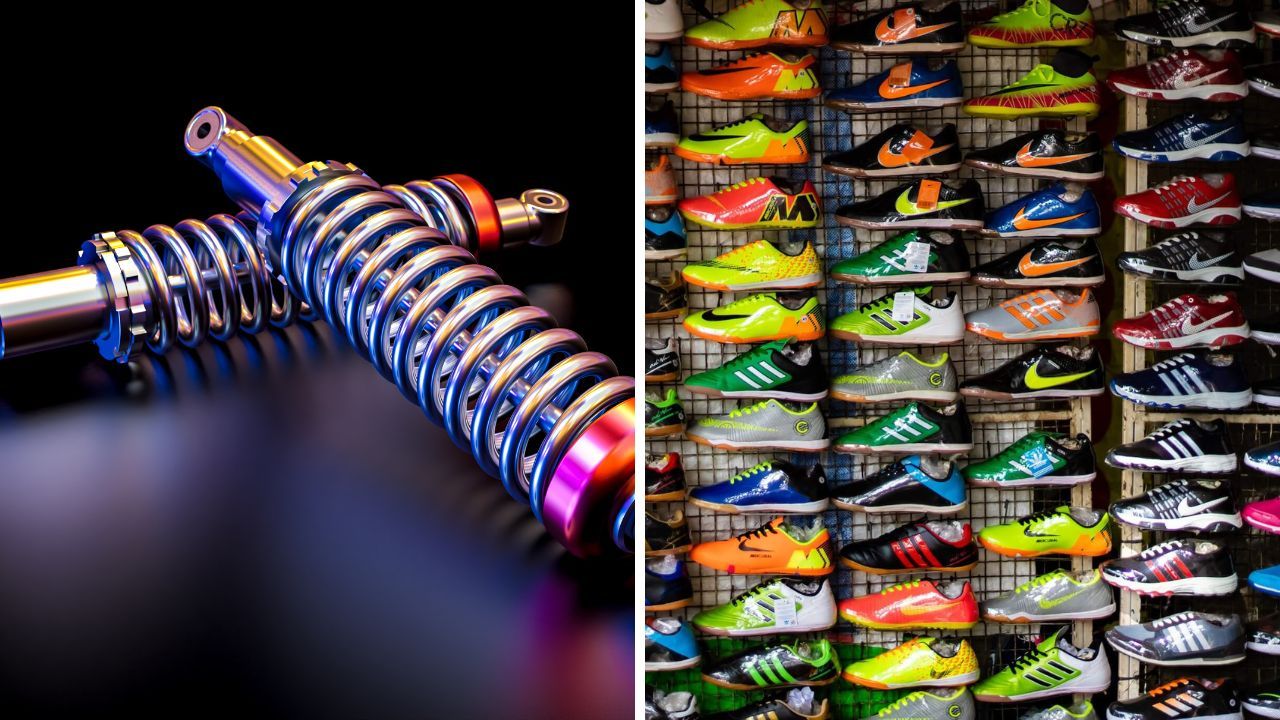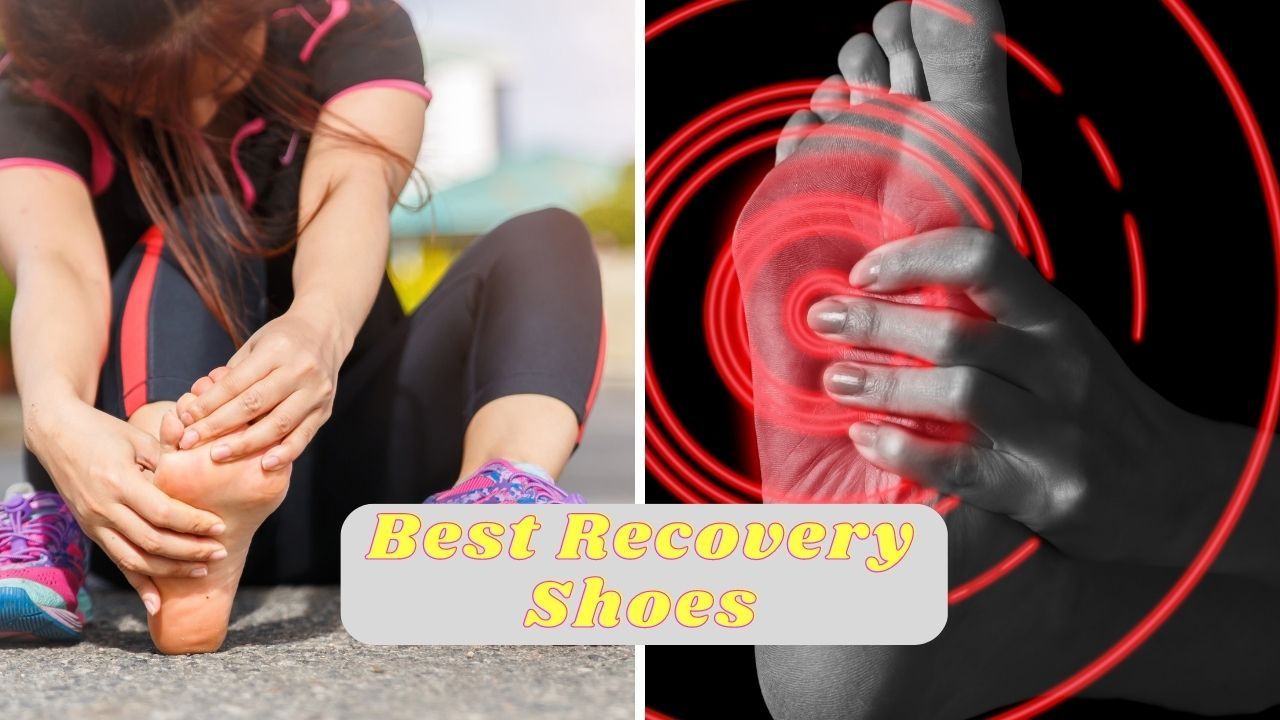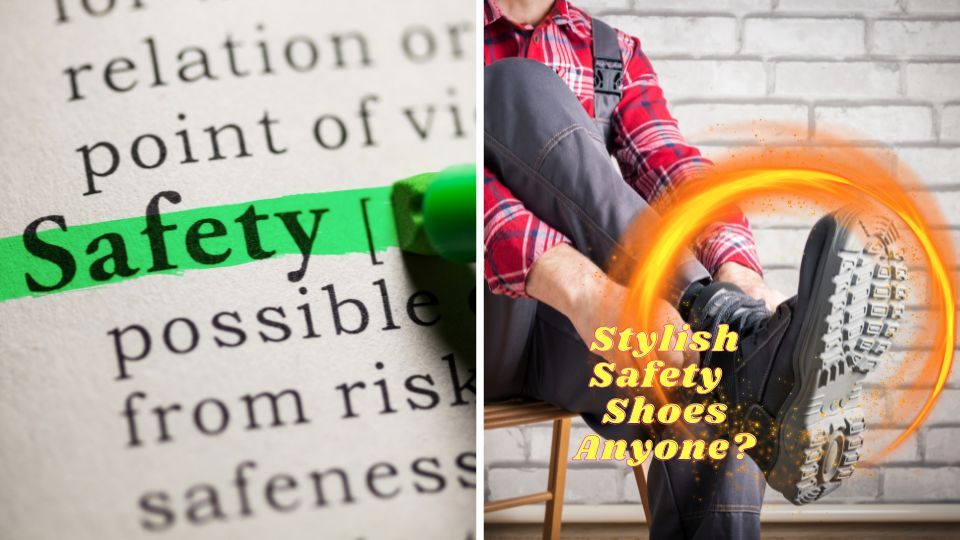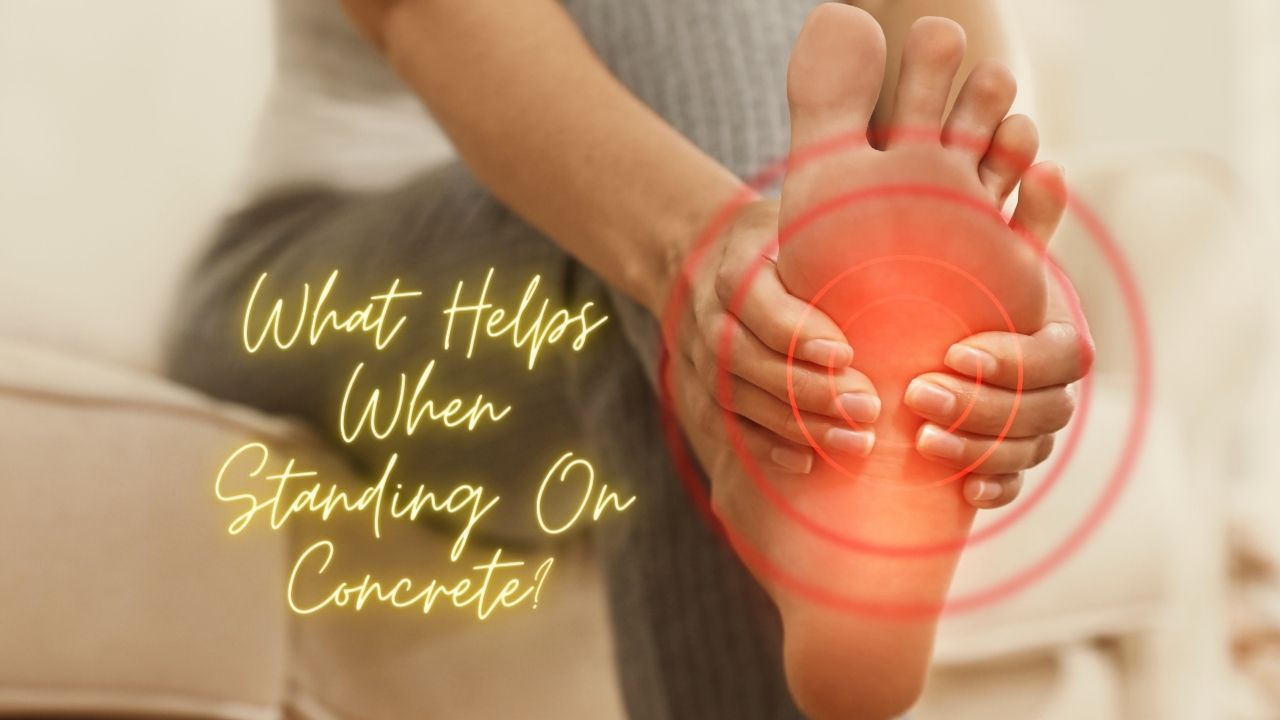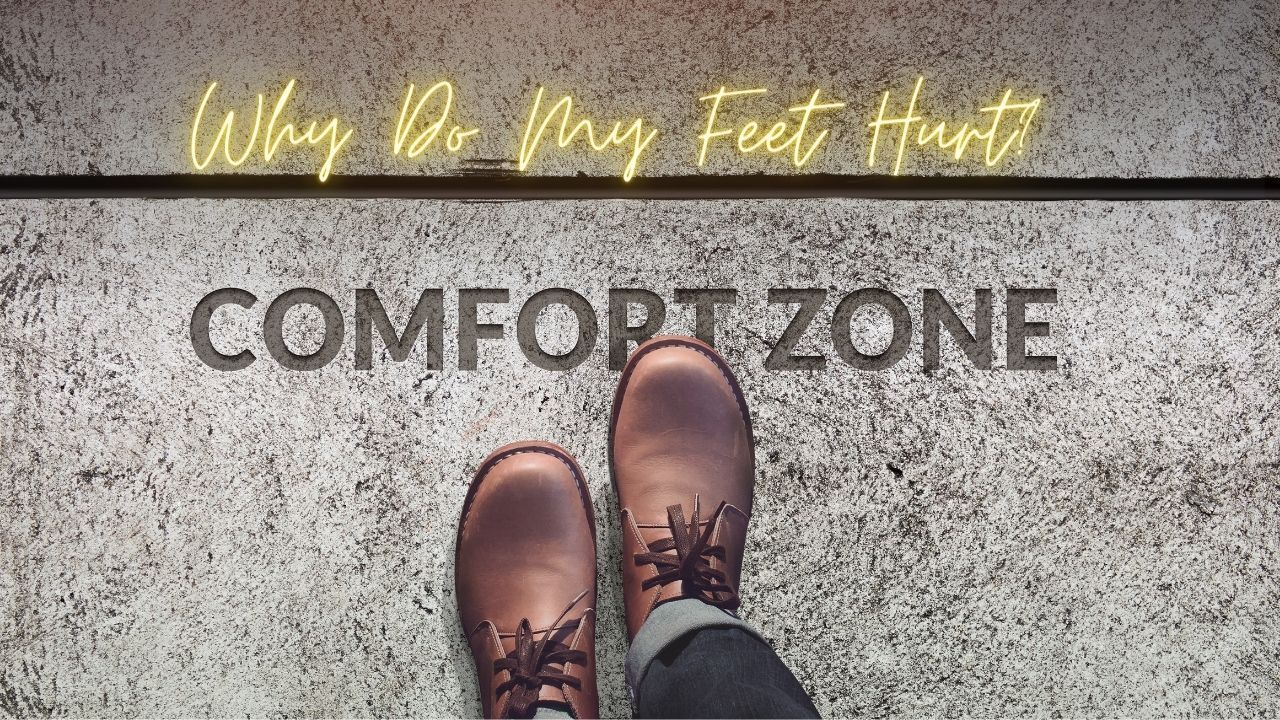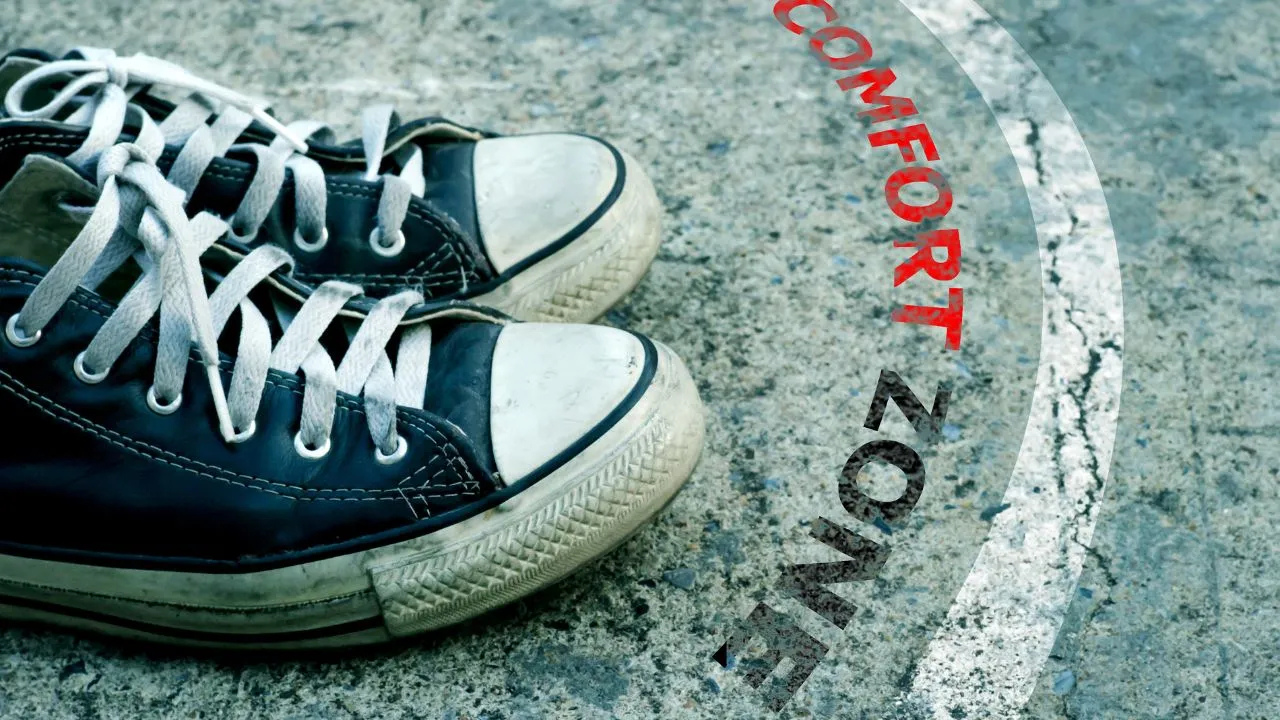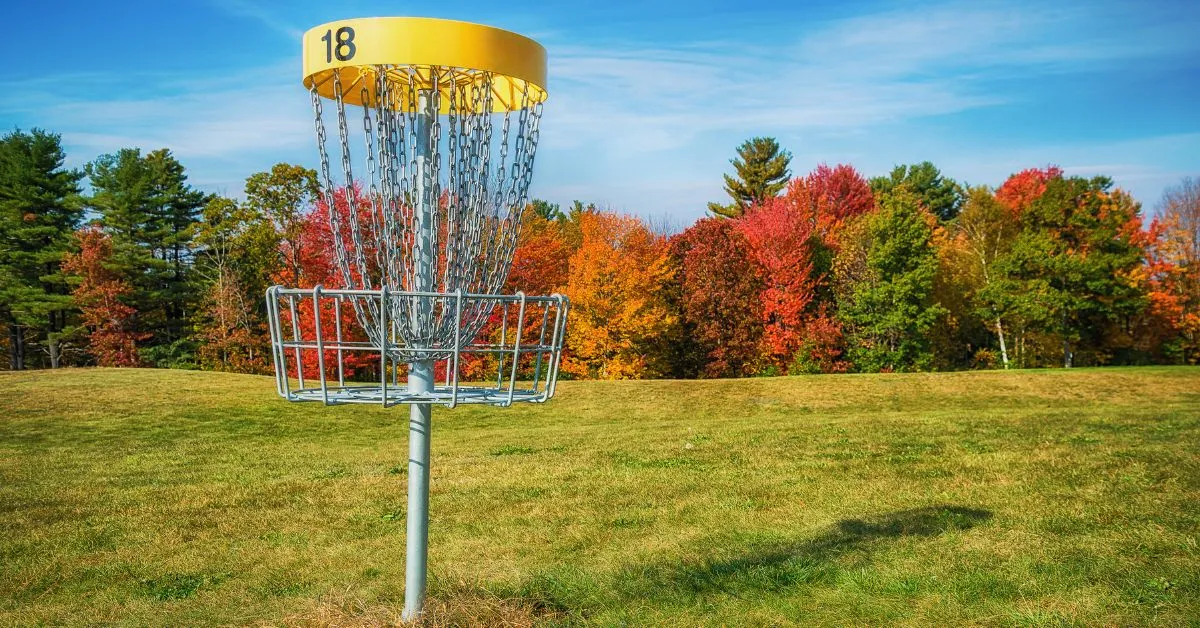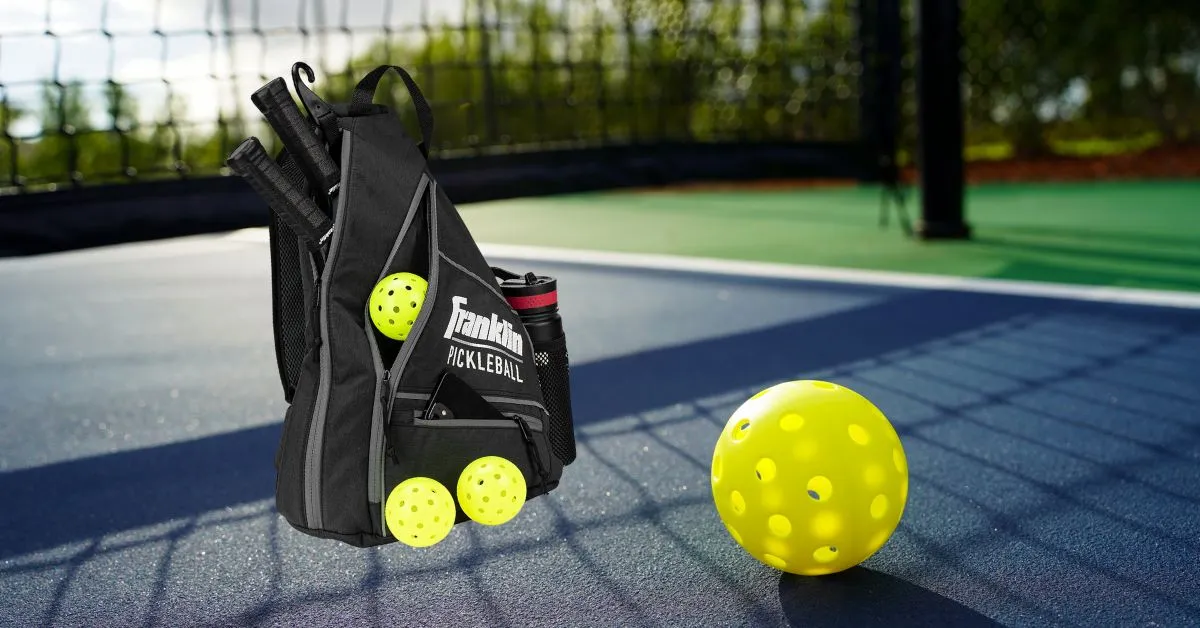Table of Contents
Do you ever experience discomfort in your heel when standing on concrete all day? You are not the only one. Spending extended periods of time standing on hard surfaces may result in various types of foot-related issues, including pain and soreness specifically in the heels. In this post we will examine why it occurs and provide useful techniques to manage or even prevent any problems caused by prolonged exposure to such conditions as standing on firm pavement for long stretches.
How to Help Yourself
- Hard surfaces like concrete can cause heel pain due to lack of shock absorption. Wearing the best shock absorbing shoes would help alleviate some of the pressure and decreased strain.
- Common causes include plantar fasciitis and Achilles tendinitis, which can be treated with rest, stretching & icing.
- Prevention strategies such as proper footwear such as the best shoes for working on concrete, regular breaks & a foot care routine are essential for maintaining foot health.
With detailed and rigorous research, we provide our readers with the finest recommendations. Our recommendations are our opinions. Our cause is backed by reader support- for every click made through one of our affiliates links, a commission may be earned at no extra expense to you! As an Amazon Associate, Reviewsopedia may earn a commission from qualifying purchases. Thank you and enjoy!
The Impact of Concrete on Heel Pain
The hard surface of concrete can have a negative effect on heel pain, as it doesn’t offer much shock absorption. This results in more force being placed on the feet and an inability to effectively ease any foot-related discomfort that might be experienced.
If you stand or walk for long periods during the day while only having contact with this unforgiving material beneath your feet, then you are likely to feel increased levels of ache around the heels and general soreness across them too.
Hard Surfaces and Foot Strain
The feet and heels can suffer from increased strain when walking on hard surfaces such as concrete, potentially leading to heel pain. This might require physical therapy or other treatments including supportive footwear and orthotics for effective relief of the ailment. Common foot injuries that are caused by this lack of shock absorption include plantar fasciitis and Achilles tendinitis, which necessitate appropriate treatment for eliminating any discomfort felt in the affected area.
Lack of Shock Absorption
Due to the hard and rigid properties of concrete floors, shock absorption is not present. As a result, increased pressure can be put on feet and legs, which can lead to heel pain or tiredness after extended standing sessions. To address these common causes of discomfort from being on concrete surfaces for too long, we must find ways that reduce strain in this area. Ultimately avoiding aches such as sore heels or general fatigue felt by our lower limbs.
Common Causes of Heel Pain on Concrete Floors
Heel pain can be caused by two major issues when standing on concrete floors: plantar fasciitis and Achilles tendinitis. These conditions become aggravated due to extended exposure to hard surfaces like concrete, leading to persistent discomfort in the heel area. This explains why so many people experience ache after prolonged periods of standing on such rough terrain as this type of flooring offers little cushion for support underneath the foot. The bottom line is that any amount of time spent walking or working on solid ground presents risks associated with these common sources of foot soreness and should not be taken lightly if relief from chronic heel pain is desired.
Plantar Fasciitis
Plantar fasciitis is a condition in which the plantar fascia of the foot experiences pain and swelling. This can be caused by any number of factors, such as sudden or intensive activity, overtraining too soon, prolonged standing on hard surfaces that cause strain to muscles connected with pronation (overpronation), tight calf muscles paired with an increase in weight. Improper footwear can contribute. In order to treat this issue involving plantar fasciitis, it’s essential for one to rest properly while also stretching out their feet and calf muscles alongside icing them regularly.
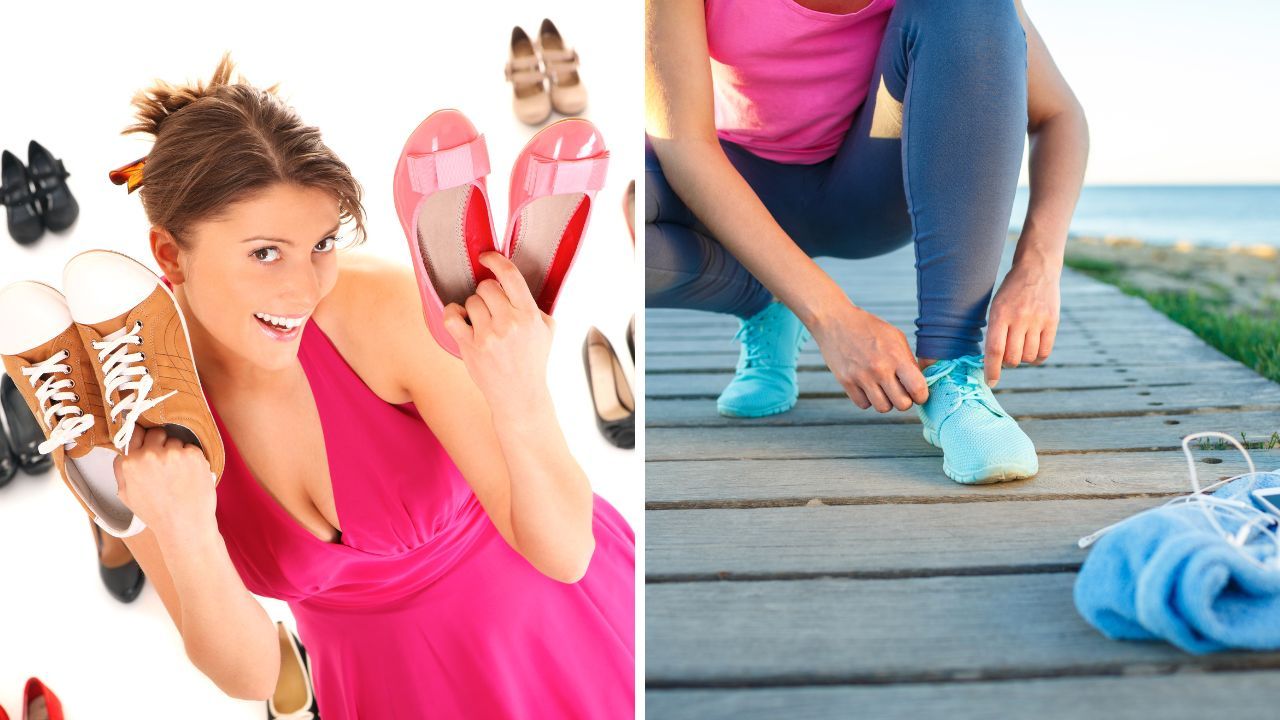
Achilles Tendinitis
The heel bone is attached to the calf muscles by a tendon called the Achilles, and if it gets overused, this can lead to an inflammation known as Achilles tendinitis. This tends to cause tenderness in both the area around your heel and down into your lower calf muscle.
If you don’t address this condition appropriately, there’s potential for that same Achilles tendon to be torn or ruptured, which might require surgical treatment, something best avoided!
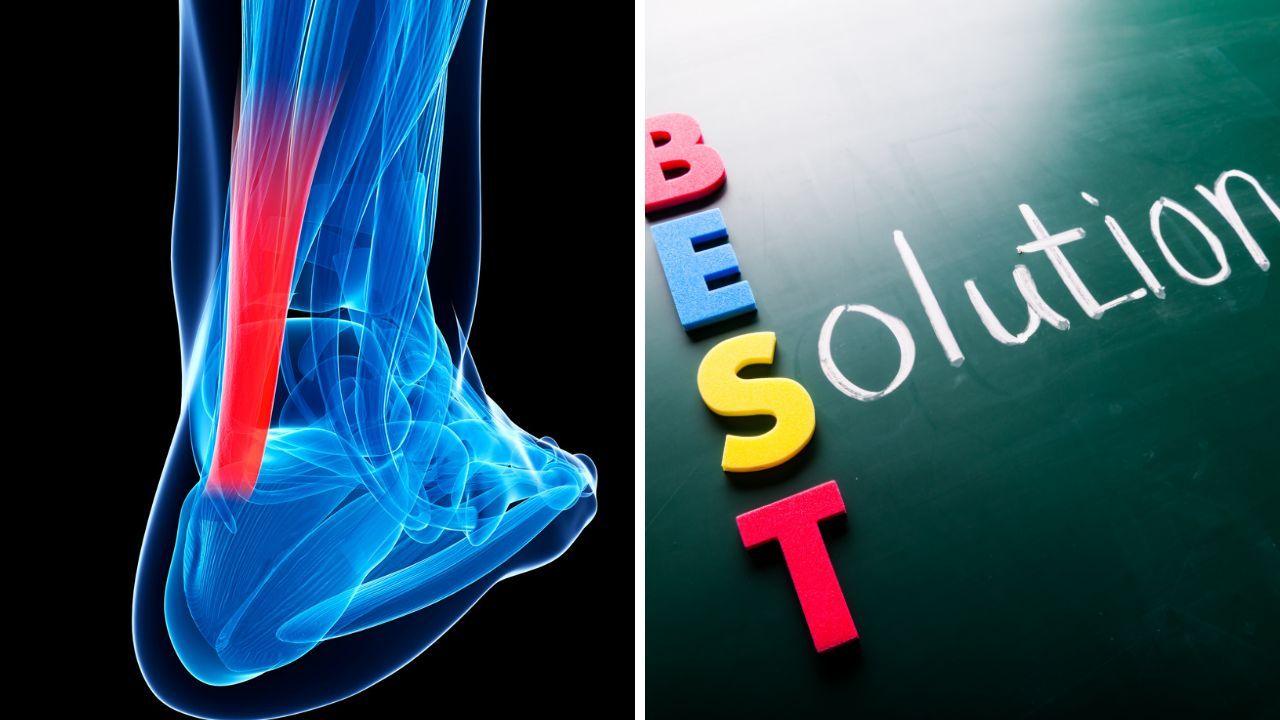
Heel Pain Risk Factors
Heel pain can arise from standing on concrete floors. It is important to be aware of the risk factors associated with this kind of discomfort, such as inadequate foot mechanics, structural issues in feet and too much time spent on hard surfaces.
To help alleviate these problems, you should wear appropriate footwear, employ orthotics and do stretching exercises regularly. It could also pay off to have a better understanding of what causes heel pain when walking or running across harsh flooring like concrete slabs or tiles.
Foot Mechanics
The feet contain many small ligaments, bones and muscles which can be strained when standing on hard surfaces such as concrete floors. This lack of shock absorption may lead to increased pressure in the heel area, potentially causing pain and discomfort along with a range of conditions like sore feet or even stress fracture due to these tough floorings. Heel spurs are often linked with this type of foot mechanics, making it an important factor for the onset of heel related issues, particularly those arising from too much strain while standing.
Foot Structure
The form and size of the feet can affect its movement patterns and shock absorption. Individuals with either a high arch or flat foot may be more prone to discomfort related to the heel because of extra tension on their plantar fascia. To help protect foot structure, as well as reduce chances for pain in that area, wearing comfortable shoes along with orthotics and stretching are encouraged. Adding strengthening exercises is also recommended for prevention from developing heel issues.
Prolonged Standing
Standing for long periods on surfaces like concrete can cause stress to the heel and other parts of the foot, causing such problems as plantar fasciitis and discomfort in the form of pain from a condition known as heel fat pad syndrome. Such cases may be made worse by continued standing, leading to an increase in both agony and difficulty treating them. It is important to take preventative measures against this kind of distress when regularly needing to stay upright on hard floors.
How to Relieve Heel Pain from Standing on Concrete
To soothe aches in both the foot and heel, a variety of approaches can be taken. This includes wearing supportive shoes combined with orthotics or insoles to reduce pain brought on by standing for long periods on concrete surfaces. Exercising through stretching and strengthening are useful strategies that may also help relieve symptoms. Let’s take an in-depth look at each remedy we can use to ease this type of discomfort!
Supportive Shoes
Sufferers of heel pain can gain a wide range of benefits from wearing supportive shoes. These include arch support, stability and cushioning for the heel as well as relieving pressure points to encourage enhanced mobility.
When selecting appropriate footwear, key features like arch support, adequate padding at the heels and general stability should be considered. There are various types available such as running or walking shoes which have been specifically designed with this in mind along with orthopedic options too.
Ultimately individuals experiencing ailments related to their feet will find that they experience considerably less discomfort when opting for stylish yet comfortable clothing geared towards providing maximum protection against backaches caused by an improperly supported foot condition, resulting in effective relief from painful symptoms associated with your issues around plantar fasciitis or soreness within the ankle area due to overuse injuries.

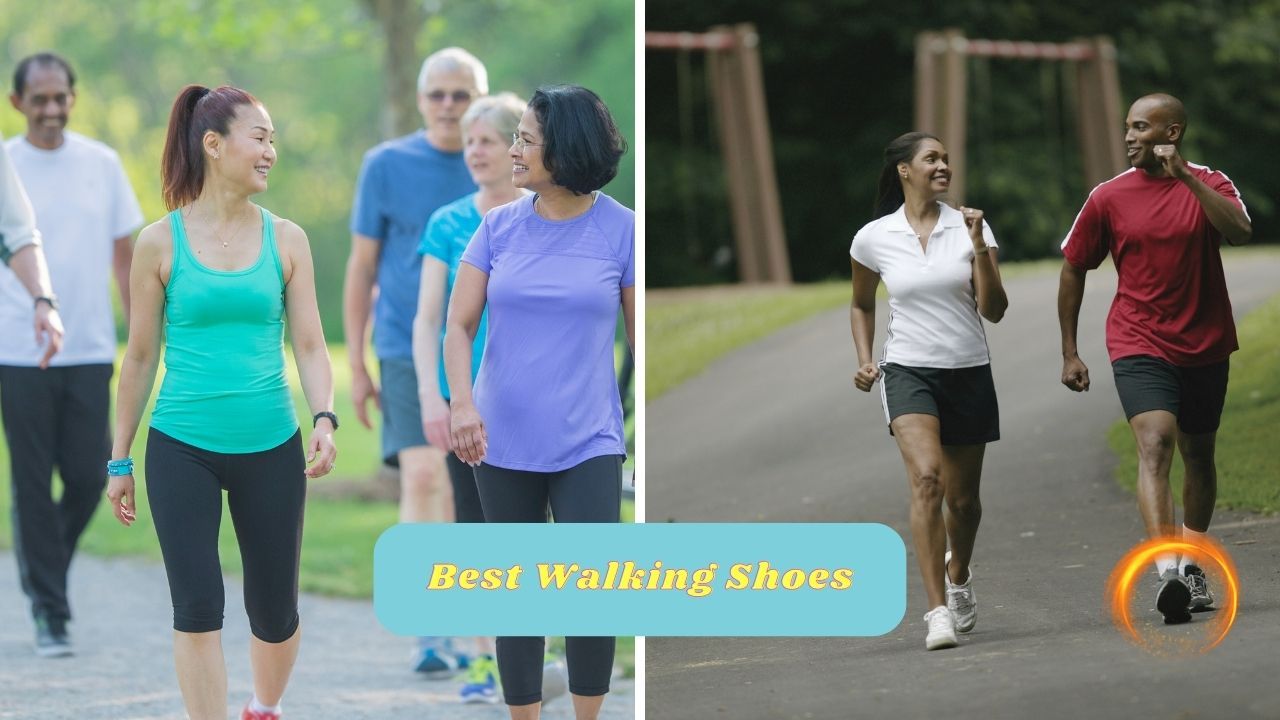
Insoles and Orthotics
Foot pain, arch support and body discomfort can be reduced with the use of insoles and orthotics. Such shoe inserts are designed to provide increased stability, cushioning for feet while also correcting foot abnormalities or any painful conditions experienced. They promote healthy movements by offering more effective arch support as well as providing relief from lower body-related pains. It is recommended that a medical professional be consulted before deciding which insert best suits your individual needs in order to ensure positive results.
Stretching and Strengthening Exercises
By consistently engaging in stretching and strengthening exercises to help with heel pain, the benefits can be plentiful. These routines may include stretches for both the Achilles tendon and plantar fascia which could reduce ache levels while improving overall gait stability. Regularly doing these activities might even provide a solution or relief from conditions such as plantar fasciitis too. It is wise to do them at least 2-3 times each day if maximum improvements are desired when it comes to relieving foot distress like hurtful heels!
Diagnosing and Treating Heel Pain
First and most importantly this is not medical advice. We are only explaining what may happen when seeking advice from your doctor. When it comes to treating and diagnosing heel pain, there are a few different options. During the physical examination process, medical professionals will seek out solutions that don’t involve surgery first as an initial step in treatment. These non-surgical treatments can vary depending on the severity of the individual’s condition or injury, but may include things such as stretching exercises or specialized shoes. In cases where these are the cases, these cases are not uncommon.
Physical Examination
The doctor or podiatrist will carry out a physical examination to diagnose the cause of heel pain and determine the proper treatment. They start by visually inspecting both sides of the foot, when weight-bearing and not bearing it. Testing for muscle tightness as well as any deficiencies in certain muscles groups or diminished ankle reflexes. This allows them to discover what has triggered this discomfort in their patient’s heels so they can offer suitable relief from its symptoms.
They also review each individual case carefully before concluding on an appropriate remedy that takes into account all factors related to that person’s specific condition concerning their feet pains, including advice regarding taking rest periods where necessary along with other healing methods like therapies utilizing heat or cold treatments plus special cushioning soles for walking comfort enhancement if needed at different stages during recovery progress until full optimal results are achieved.
Non-Surgical Treatments
Remember, always seek the help of a licensed doctor or professional for your pain. Heel pain can be managed with various treatments that do not require surgery. Rest, icing the area to reduce inflammation and swelling, taking anti-inflammatory medications, physical therapy, stretching exercises as well as using orthotic devices are all viable options for those looking to find relief from their heel discomfort. Night splints or taping of the foot may also help alleviate stress on the affected area while ensuring proper support is provided by modified footwear if needed. Surgery should always be considered a last resort when other more conservative measures fail to provide adequate levels of comfort and healing benefits.
These treatment protocols aim at decreasing any existing pain. To reducing the incidence of swellings or inflammations. They also increase mobility within one’s feet along with helping alleviate pressure off ones’ heels, which helps achieve desired relief faster than ever before!
Surgical Options
Treatments such as plantar fascia release and endoscopic plantar fasciotomy may be considered for severe cases of heel pain that have not responded to conservative approaches. The idea behind these procedures is to lessen the tension in the ligament located on your feet’ soles, known as Plantar fascia, so swelling can subside and provide relief from discomfort. Recovery time depends on which treatment you opt for. They both aim at improving mobility by diminishing pain related to heel issues.
Prevention Strategies for Heel Pain
It’s essential to take proper care of your feet in order to prevent heel pain. Wearing the right shoes and taking regular breaks can help reduce the chance of developing this issue. Setting up a foot-care routine is recommended for maintaining optimal health and avoiding discomfort or other issues related to heels. This should include inspecting the soles, massaging them regularly with oil or cream (if needed), trimming nails properly, checking between the toes etc. In short, preventive measures are key when it comes down to soreness in either one’s sole!
Proper Footwear
For those who suffer from heel pain caused by standing on concrete for long periods, the right type of footwear is key. It should offer appropriate cushioning and support to minimize any discomfort. When selecting a pair, it’s essential that you have the correct size and fit in mind as well as your planned activities while wearing them. If you anticipate spending long durations with your feet bearing weight, then look specifically for shoes designed specifically to prevent such heel aches or pains.
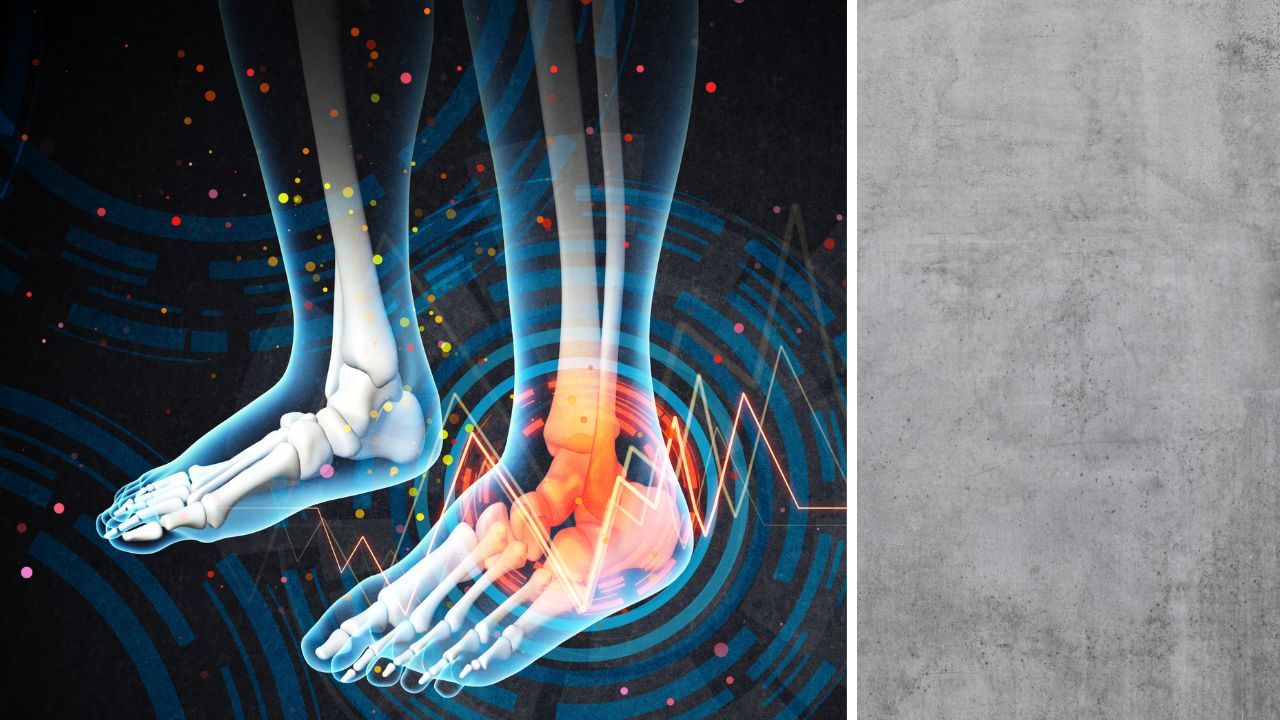

Regular Breaks
Heel pain can be reduced by taking regular breaks, allowing the feet to rest and recover from long-term periods of standing or walking. Resting for intervals around 30 minutes up to an hour depending on activity is highly recommended. This also presents an opportunity to stretch out the legs and feet, which helps alleviate tension in the muscles and tendons connected with it.
Foot Care Routine
By stretching regularly and using orthotics when needed, a good foot care routine can help to avoid pain from standing on concrete. As well as keeping your feet healthy and strong through proper maintenance, taking the necessary steps will also prevent heel discomfort in particular. Maintaining a body weight that is within an optimal range furthers these efforts towards achieving complete health for your feet.
Summary
By taking proactive steps such as wearing appropriate shoes, regularly resting the feet and developing a foot care regimen, those who stand on concrete all day can manage their heel pain symptoms and work to prevent any long-term issues. Knowledge about how standing on hard surfaces like concrete contributes to this type of discomfort is critical in understanding what kind of treatments are necessary for lasting relief from these uncomfortable pains.
Frequently Asked Questions
How do you keep your feet from hurting when standing on concrete?
In order to prevent your feet from aching when you are standing on concrete, alternate between transferring the weight of your body and placing one foot slightly in front. Use a stool or rubber mat for added cushioning underfoot. Make sure that you wear shoes with enough support as well as socks that wick away moisture – this will reduce pressure placed on the feet while standing on hard surfaces like concrete.
How do you relieve heel pain from standing all day?
One way to help with the soreness in your feet caused by standing all day is to rub lotion or massage oil onto them, paying extra attention and pressure on the arch of your foot as well as gently squeezing your heel. Doing this can ease any pain from having been on one’s own.
What role does foot mechanics play in heel pain?
Heel pain can be caused by standing on concrete for extended periods of time, as the feet and their mechanics are put under strain from such a hard surface. The stress this places on one’s foot can lead to a strained foot.
What is the first step in diagnosing heel pain?
To get to the bottom of heel pain, a physical examination is necessary. Your healthcare provider will be able to evaluate what’s causing your discomfort and provide proper treatment options. This evaluation should include an assessment of the area around your heels for any indications that could explain your heels.
Other Related Articles

